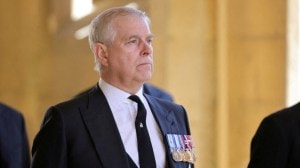Last of the Tigers earn their stripes
FEBRUARY 2: They are the last three surviving Tigers. The legendary Darjeeling Sherpas, who were honoured with the special badge for their...

FEBRUARY 2: They are the last three surviving Tigers. The legendary Darjeeling Sherpas, who were honoured with the special badge for their heroic feats during the Himalayan expeditions of the last century. In Mumbai for a special function in their honour by the Himalayan Club, these three legendary men who scaled great heights, retain their unassuming, down-to-earth manner.
Explains Nawang Gombu, twice Everest summiteer and former director of the Himalayan Mountaineering Institute Darjeeling, “The Tiger’s badge was instituted by a Britisher, H W Tobin, and given by the Himalayan Club to Sherpas who achieved outstanding success during a Himalayan expedition or peformed heroic deeds. About 20 Sherpas were given these badges in the last century, of which there are only three of us surviving today.”
Ang Tsering (98) was but a lad when he joined the 1924 expedition to Everest in which George Mallory and Andrew Irvine disappeared near the summit. The baffling connundrum — whodunnit first — has carried through in this millennium.
Recalls Tsering, the only surviving participant of the pre-war expedition, “The route was from the Tibet side and when I was at the Rongbuk monastery, I was warned by a lama not to attempt the summit.” He remembers that Irvine and Mallory were spotted high on the north face of Everest around 26,000 feet. That was the last time they were ever seen.
For this grand old man of the snows, the most heroic saga was on Nanga Parbat (now in Pakistan) in 1934 under the German leader Will Merkl. A savage storm broke out and as the members on the higher camps on the mountain waited for the snowfall to lessen, rations and kerosene ran out. Some Sherpas and Germans died. Others were too weak to descend. Merkl entrusted Tsering with the task of descending and bringing relief. Gaylay, another Sherpa, refused to leave Merkl alone.
Sixty-odd years on since that expedition, Tsering can still graphically describe those 10 fateful days. His tortuous descent on thick ropes. No proper equipment, no sleeping bags, only rough blankets and no food.
“I ate fistfuls of snow now and then. So many Sherpas and Germans died, suffering from terminal exhaustion and snowblindness. There was nothing to do but keep going down. I was given a camera but in exasperation, I tore it off my neck. It was near Camp IV that I saw signs of life. They came running over to help me after I cried out.”
Another vivid memory is that of yearning to drink the full thermos of tea but not being allowed to do so. “They told me I should drink it only teaspoon by teaspoon as I had been without proper food and drink for so many days.”
Tsering, who subsequently spent nearly a year in hospital being treated for frost-bitten toes, was given the German Order of the Red Cross issued in the name of Adolf Hitler.
Nawang Gombu, nephew of Tenzing Norgay, cut his climbing tooth, on no less than the highest peak in the world. A teenager then, he was the youngest member of John Hunt’s historic expedition in 1953, when Tenzing and Edmund Hillary became the first to set foot atop the world’s highest peak.
Gombu’s moments of glory atop Everest came some years later. In 1963, he summitted as member of the American Norman Dyhrenfurth’s expedition and in 1965 summitted along with the Indian team.
His decorations (Queen Elizabeth Coronation medal, Padma Bhushan, Arjuna award, Olympic Gold medal) are almost as numerous as the peaks he has notched up — Saser Kangri, Nanda Devi, Frey’s Peak, Mt Blanc (France), Mt McKinley (Alaska), etc.
Gombu is also known for his role as mentor nurturing India’s first mountaineering institute in Darjeeling. He laughs heartily, “I have spent 44 years of my life there.”
Tobgay Sherpa, who nonchalantly rattles off seven and eight thousanders (peaks above 7,000 and 8,000 mt), has climbed on Everest, Saser Kangri, the Swiss Alps and others. But to hundreds of mountaineering aspirants, he is simply `Guruji’. The man who patiently taught them the craft at the Nehru Institute of Mountaineering at Uttarkashi.
And in an age of Goretex, of high-tech gear, and satellite phones atop Everest, he is a lesson in humbleness, reminding one of the days when climbing entailed clawing your way up to 26,000 ft with a load and oxygen cylinders weighing 46 lbs strapped to the back.
The Sherpas will be honoured on Saturday evening at a function in the S B Chavan auditorium.



- 01
- 02
- 03
- 04
- 05




























